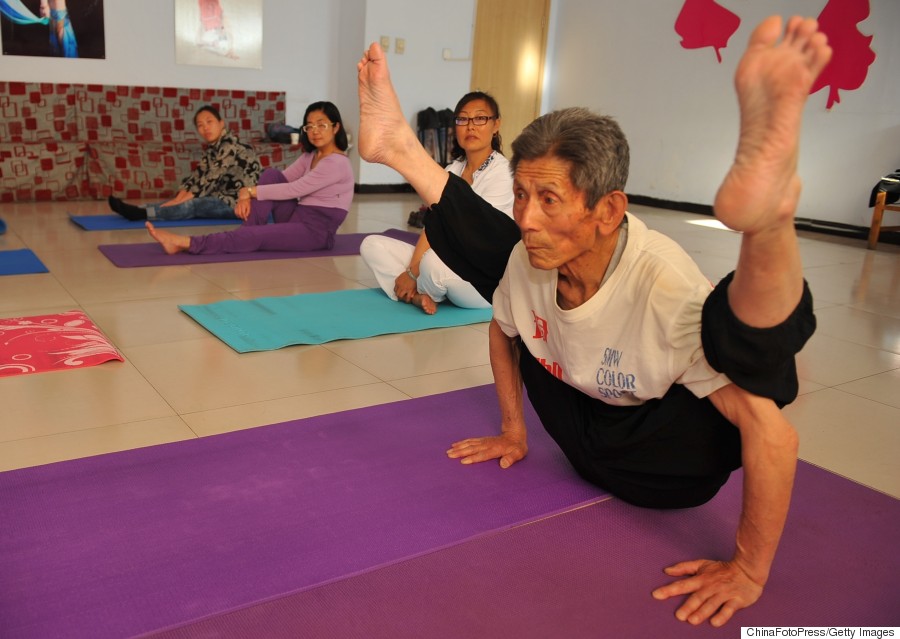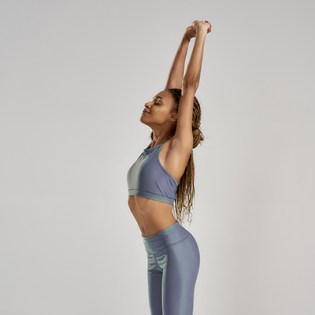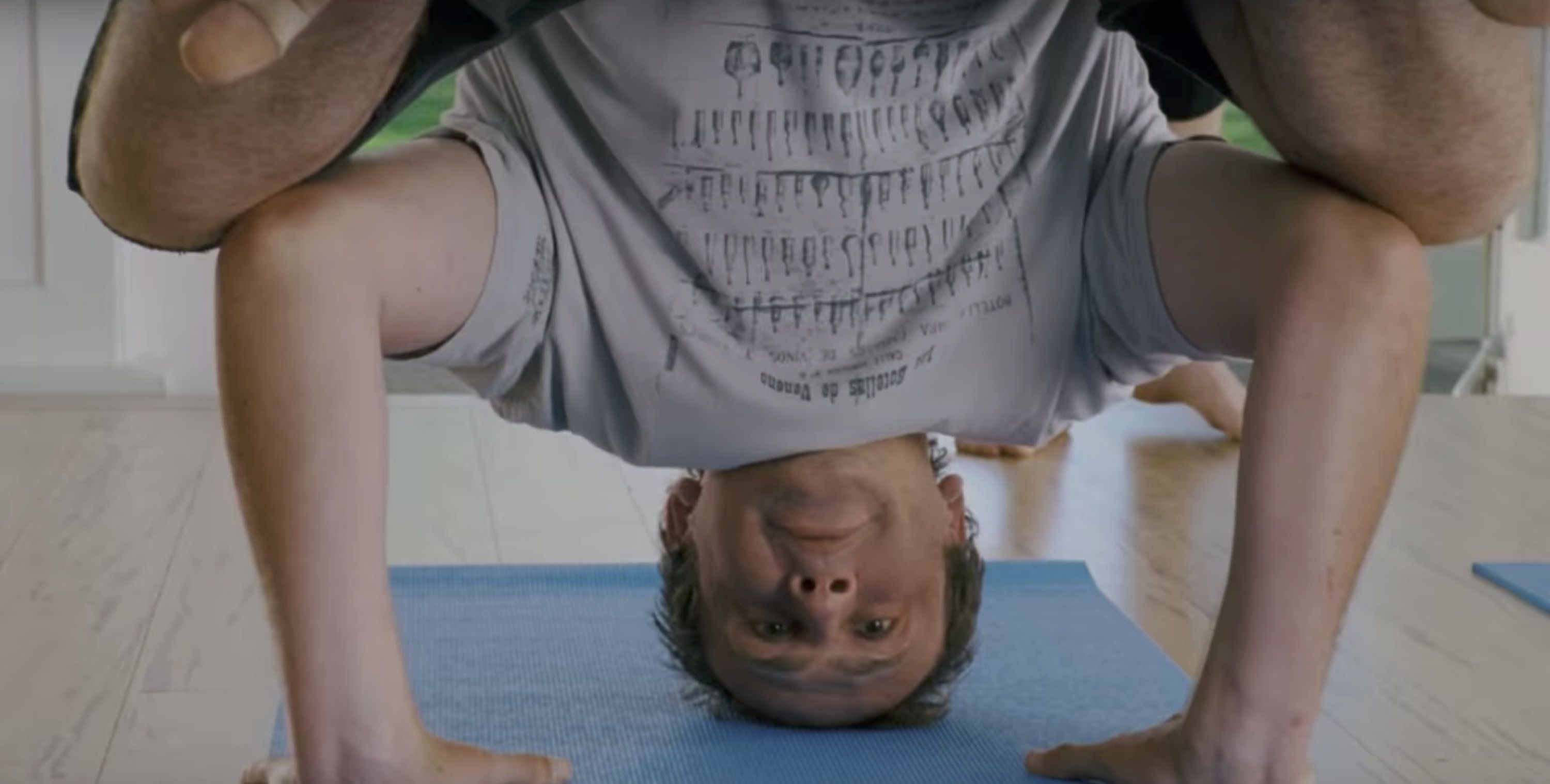
If you are a beginner to ashtanga yoga, you should start with the Primary Series. Mysore classes can also be found. Once you have learned the Primary series of yoga, you can begin a more advanced one. It's an excellent way to strengthen your practice and create a strong foundation.
Primary Series
The Ashtanga yoga Primary Series provides a foundational sequence that teaches basic principles of the practice. This series is ideal for beginners who want to establish a foundation of strength and flexibility. Each series has many different postures and requires you to be physically fit to reach the goals.
It will take approximately 90 minutes to complete the entire Primary Series. It is recommended that you practice the Primary Series at minimum six times per day. A few lifestyle changes are also required, including a plant-based diet as well as an early morning practice.

Mysore-style classes
A Mysore-style class can be a great place to start if you are a beginner in Ashtanga yoga. This approach combines individual instruction with the support of a community to facilitate a seamless transition to advanced positions. This method is ideal for both rusty practitioners as well as complete beginners. It also offers individual tuition which makes it easier to manage. Due to its small class size, you will receive personal guidance and attention.
Mysore-style classes are structured so that the teacher spends time discussing proper practice and giving cues for alignment. The teacher won't rush you through the series. Instead he or she will walk you through each pose and help you adjust the poses to suit your individual needs.
Intermediate series
The Intermediate Series for beginners in Ashtanga yoga is the next logical step after the Primary Series. Intermediate series introduces more complex postures and requires breath control. This series will require you to focus more and use analytical thinking. You may experience some unease at first, but the more you practice, the easier it will be to keep up with it.
Maehle takes you through each of the twenty-seven postures in the Intermediate Series. Each posture is explained by Maehle using photographs and anatomical line drawings. Additionally, she offers practical sidebars as well as a discussion of the spiritual and philosophical background of Ashtanga Yoga. She also discusses its place in Indian culture and how yoga has evolved over the centuries.

Advanced series
There are six series in Ashtanga yoga: the Primary, Intermediate and Advanced A, B, C, D, C, D, and D. Most beginning practitioners begin with the Primary Series. This is the foundation of all other practices. The intermediate and advanced levels gradually get more difficult.
The primary series is a series of yoga postures that help you reset your body and prepare it for the advanced series. It balances your parasympathetic and sympathetic nervous systems and targets your digestive system.
FAQ
How long does it take you to learn Yoga?
You must learn how to do yoga correctly, just like any other skill. But once you've learned basic positions, you'll be able to practice yoga at home without much trouble.
Warm ups should take between 20-30 mins to get you started. You can then spend 5-10 min warming up by doing simple stretches. You can then progress to more difficult poses.
Once you have mastered the basics you can move on into intermediate classes. Here you'll learn advanced moves. For example, if yoga is something you're new to, you might start with the Tree (Vrksasana), or Mountain (Tadasana).
What kind of yoga is for beginners?
Yoga is great for all fitness levels and ages. It's an easy and effective way to stay active and healthy. People who have tried yoga say they feel better physically and mentally. They also report feeling calmer and happier after practicing yoga.
Yoga is more than exercise. It is a way to live that includes breathing exercises and stretching.
There are many types and styles of yoga. Some focus on strength training, while others concentrate on relaxation.
The type of yoga that you want depends on your goals. Iyengar yoga can help you increase your flexibility. Or if you want to tone your muscles, go for Ashtanga yoga.
How many types of yoga are there?
Bikram Yoga, also known as Bikram heated yoga, is the most common type of yoga. Other forms include Hatha, Ashtanga, Vinyasa, Iyengar, Kundalini, Yin, Power Yoga, Flow Yoga, Reiki, Pilates, Restorative, Aerial, etc.
How does yoga work?
Yoga is about alignment, breath control meditation, stillness and mindfulness. It can create a sense of calm and peace within the practitioner when it is done correctly.
The first step in any yoga class is to warm up your body. For example, you could start with forwarding bends. These moves help loosen tight muscles, and prepare you to take on deeper poses.
Next is the balance pose known as "standing." This pose involves standing on your feet with your arms extended at your sides and looking down towards your floor. Your body should feel rooted and centered.
Next, you need to get into deep stretching postures. This is where you lay on your back and bend your knees. Next, move into deep stretching poses. Hold onto something solid to prevent you from falling. You can rest your hands on the ground if you don't have something to hold onto.
After doing all these poses, you will move into a series of standing poses. These include the mountain, warrior, downward, upward, plank, and final poses.
It is important to slow down and breathe deeply when you do yoga. Deep breathing is good for your lungs and calms the mind. This can be done by focusing your inhales or exhales. Consider counting every time you take a deep breath.
You can even practice yoga while cooking. Just follow the same steps above, but sit upright instead of lying on the ground.
If you are new to yoga, try starting with just 10 minutes daily. Don't forget that yoga can benefit anyone, no matter their age.
Is yoga a sweaty sport?
It all depends on what type of yoga you are practicing. Vinyasa flow yoga (or power yoga) involves a lot jumping, twisting or turning movements. People often sweat heavily while practicing yoga.
Hatha yoga, however, is focused on forwarding twists and bends. Because these poses aren't very strenuous, most practitioners won't experience heavy perspiration.
Is yoga associated with side effects?
Yoga poses some risks, as with all physical activities. Injury is the main danger. It is important to know how to safely perform each pose.
If you are just beginning yoga, you might feel dizzy when standing on the head.
This is caused by blood pooling in your brain. Don't worry, though; this sensation goes away quickly.
Do you feel chest pains when doing downward-facing dog? Don't hold the breath. You'll only increase your heart rate and make things worse.
How long does yoga take to work?
Although yoga is difficult, it can be done with great results. It takes time in order to build strength and flexibility. Slowly increase your intensity until you reach your ideal level.
Consistency and consistency are the keys. The more often you practice, the better you become at it.
Statistics
- According to the Agency for Healthcare Research and Quality, falls are incredibly common among older adults in nursing facilities. Even the simplest ones can increase the risk of death (24). (healthline.com)
- According to calorie estimates calculated at Harvard Medical School, the average 125-pound person burns about 120 calories in a half hour of hatha yoga, and a 185-pound person burns about 178 calories in that half hour. (everydayhealth.com)
- In comparison, a 125-pound person is estimated to burn 135 calories in 30 minutes of walking (at a pace of 15-minute miles) and 210 calories bicycling at a moderate pace on a stationary bike. (everydayhealth.com)
- About one in seven U.S. adults practiced yoga in the past 12 months, according to a 2017 national survey. (nccih.nih.gov)
- The people in the yoga group were 37 percent more likely to have quit smoking by the end of the 8-week program. (nccih.nih.gov)
External Links
How To
Is yoga a good workout?
Yoga isn’t just for those who want to lose weight. Yoga can help you improve flexibility, balance and coordination as well as strength, focus, calmness, and coordination.
Yoga isn't just exercise, but an art form. The poses can be used to relax or meditate. They allow us to improve our posture and concentration as well as our breathing.
Yoga is practiced by yogis. Yogis follow various forms of yoga, including Hatha, Ashtanga, Iyengar, Vinyasa, Bikram, Kundalini, Yin Yang, and Restorative.
There are many different types of yoga. They all have the same goals. Each type focuses differently on health and wellbeing. Some yoga styles include meditation, pranayama, and Hatha.
There are some yoga movements that don't require equipment.
-
Sun Salutation-This series of 12 poses starts with a forward bending, followed by 10 different positions.
-
Warrior Pose: While holding a stick, or staff, you can do a warrior pose.
-
Triangle Pose-This pose requires you to lift one leg behind you while bending at the knee.
-
Standing Forward Bend - This position involves bending forward from the waist and putting your legs straight on the floor.
-
Seated Twist- This pose is performed while sitting on a seat or mat.
-
Cobra Pose: This position is done lying on your back, arms raised.
-
Child's Pose - This pose is done while lying face up on the ground.
-
Cat/Cow Pose- This is a combination of a cat/cow pose. Place your upper body on the ground and lie down. Roll over on your back and place your hands underneath your shoulders.
-
Head Tilt – This pose involves tilting your head back, while your eyes are closed.
-
Shoulder Stand – This is a standing position in which your feet are raised above your head.
-
Tree Pose - This pose is achieved while kneeling on your knees with both hands placed underneath your shoulders.
-
Bow Pose: This pose requires you to bend forward from the hips, and then place your palms on ground.
-
Corpse Pose: This pose can only be held for five seconds.
-
Mountain Pose- You can call this mountain pose because your spine is straight up and you are tall.
-
Legs up the Wall Pose – This pose involves hanging upside down from a wall.
-
Side Angle Pose: This pose involves leaning against a wall, putting your right hand next to the wall, and then extending your left arm.
-
Plank Position - This position is achieved when you lie flat on your stomach and extend your left arm and right foot away from each other.
-
Bridge Pose- Balance on your elbows and toes for this pose.
-
Reverse Table Top Position - You can achieve this pose by lying on your stomach and reaching towards the ceiling.
-
Handstand: This pose requires balance as well as strength. You can hold your body between two walls or a frame of a door to perform this pose.
-
Half Moon Pose - This pose is also known as Hero Pose. It's performed by standing on both your hands and toes.
-
Headstand (or handstand) - This position requires balance and strength. This pose can be done on a wall, or by using a doorframe.
-
Forearm Balance – This is a pose where your forearms rest on a tabletop.
-
Spinal Twist - This pose lies on your belly while reaching your arms.
-
Supported bound angle pose - This pose needs support and balance. You will need to find a sturdy object like a tree branch or an old beam to lean on.
-
Wide Leg Forward Fold – This is achieved by extending your legs out and touching your toes.
-
Single Pigeon Pose – This pose is similar the the wide leg forward fold, but has only one limb extended.
-
Extended Puppy Dog Pose - This pose is very relaxing. It involves extending your legs outward and bent your knees.
-
The Forward Bend pose involves bending forward and squatting cross-legged.
-
Crow Pose: This pose is very difficult, but it's rewarding once you get the hang of it. You do this by raising your arms high above your head and lowering them to the floor.